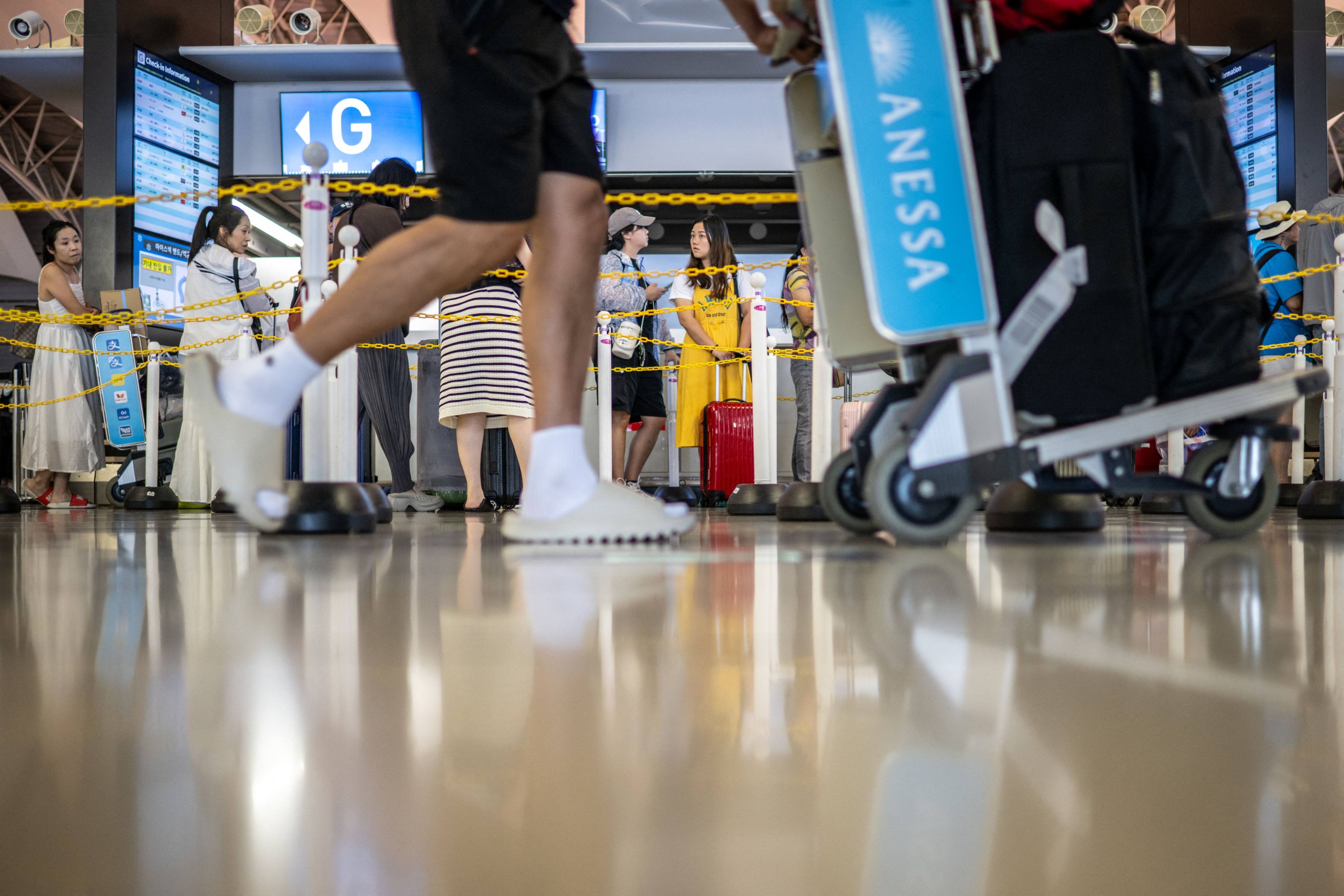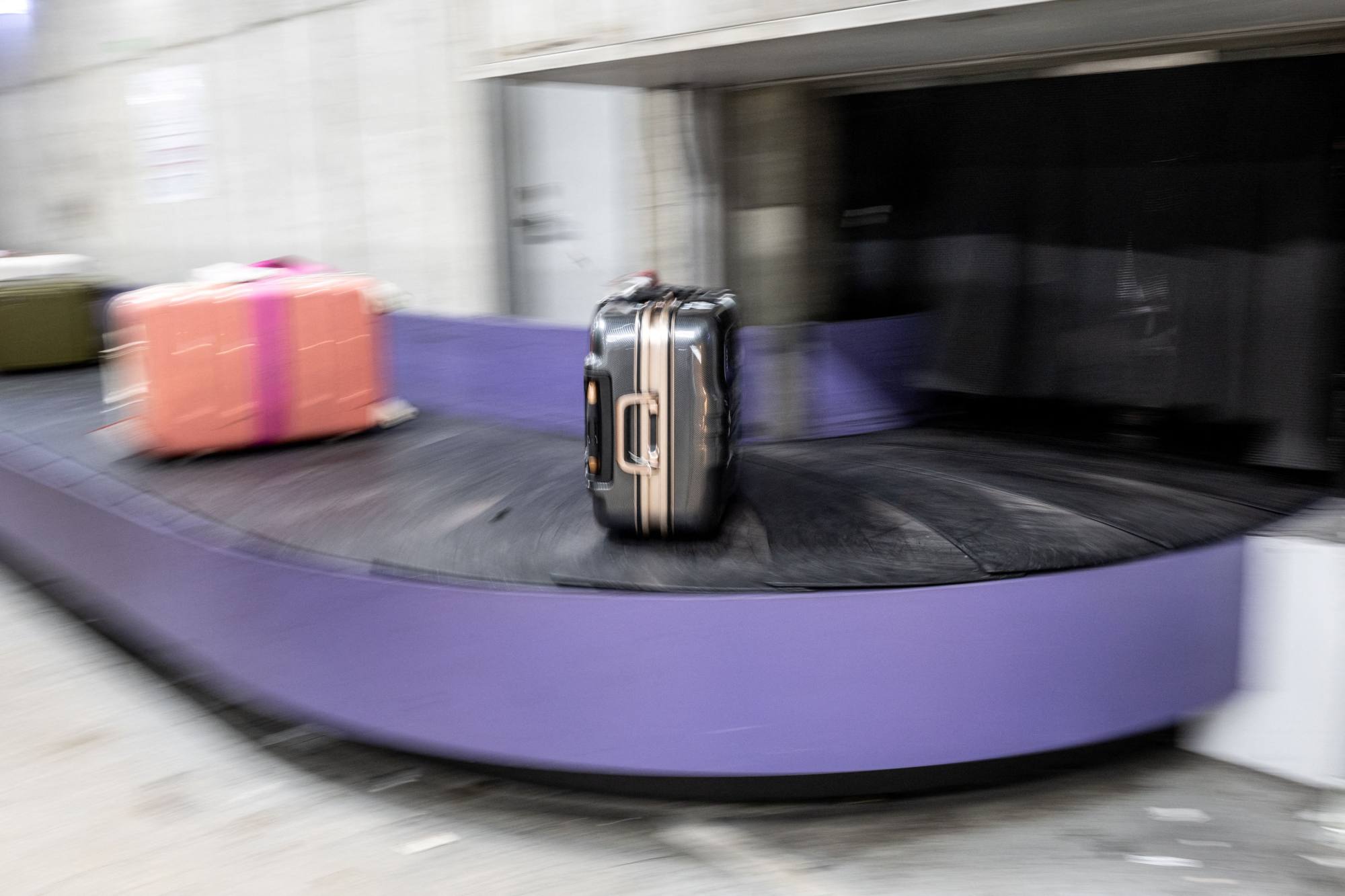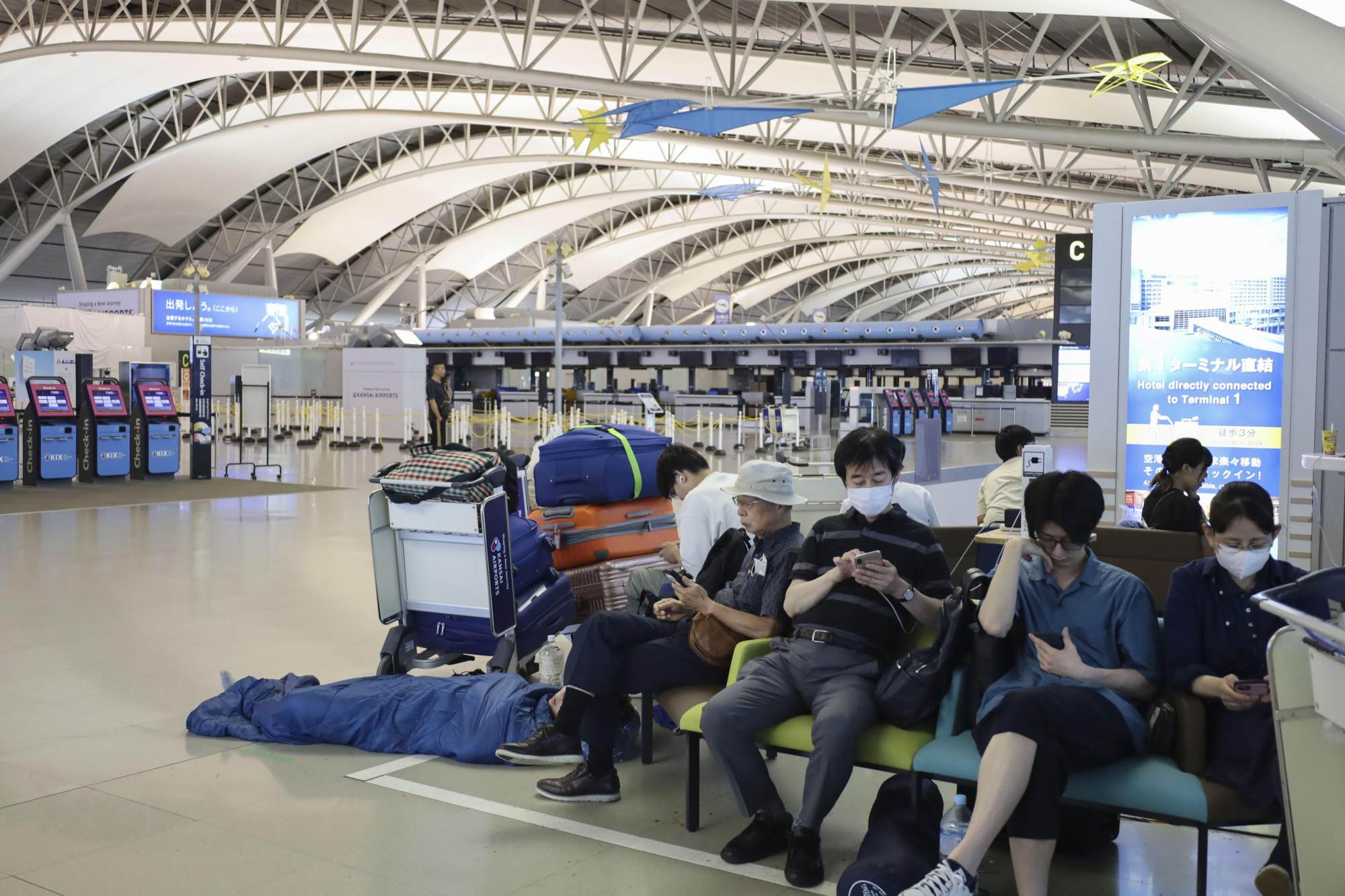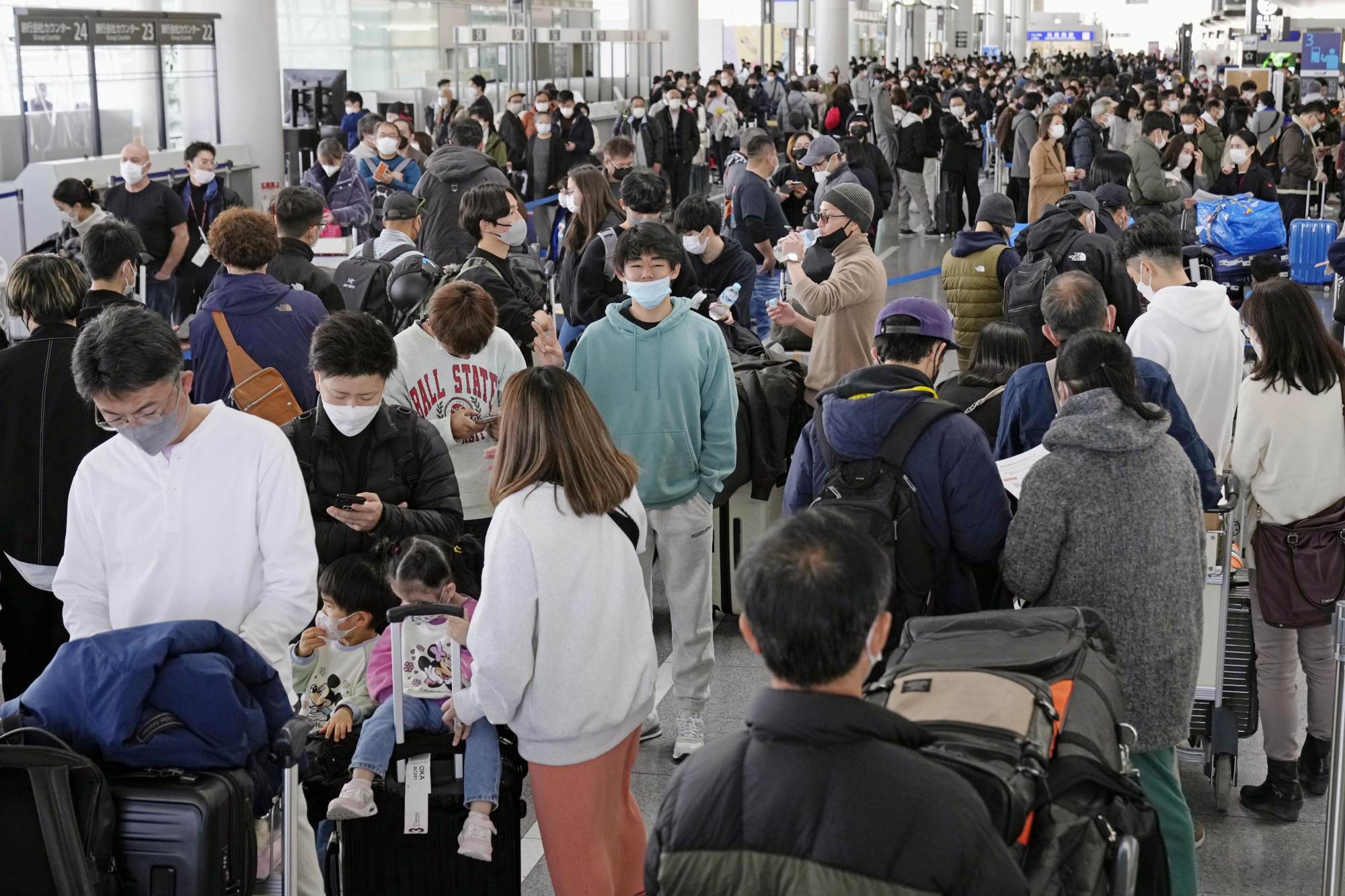Going down: the acclaimed Japanese airport that’s sinking into the sea
More than US$150 million has been spent on raising the sea walls surrounding Kansai International Airport to slow the sinking rate

Japan’s Kansai International Airport (KIX) has won international awards for its architectural design, efficiency and staff, and was recognised last year as the best airport in the world for baggage delivery after not mislaying a single item of luggage for a decade. Despite all the plaudits, KIX has a major drawback: it is sinking.
Built on a man-made island in Osaka Bay, KIX was one of the largest construction and engineering projects ever undertaken in Japan. Made up of two islands, one covering 510 hectares (1,260 acres) and the second over 1,055 hectares, it was built to ease overcrowding at the nearby Osaka International Airport and welcomed its first passenger flight in September 1994.
Since then, it has grown into a major hub for both domestic and international flights, with around 30.6 million passengers linked to 91 cities in 25 countries in 2024.
While the numbers are impressive, it is hard to get past the fact that the airport has already sunk into the clay layers beneath the bay more than engineers initially expected, and it continues to inch lower every year.
According to operator Kansai Airports, the surface of the airport’s first island is today about 3.84 metres (12.6 feet) lower than when it opened in 1994. Since landfill began for its construction, the airport has experienced an average settlement of 13.66 metres (45 inches).
The operator is keen to point out that some “settling” of the surface level was always expected. The average subsidence measured just 6cm (2.4 inches) across 17 points on the artificial island last year, according to the latest data released in December.

The situation is somewhat worse at the second island, where the surface has fallen by 17.47 metres (57.3 feet) since the commencement of landfill work, and the average subsidence at 54 measurement points last year was 21cm (8.3 inches).
More than US$150 million has been spent on raising the sea walls surrounding the islands, but some engineers still predict that in the next 30 years, sections of the elevated airfield may be at sea level.
The islands were constructed atop a 20-metre (65.6-foot) thick layer of alluvial clay, which acted like a sponge.
Despite installing 2.2 million vertical pipe drains that were meant to solidify the clay and limit contraction, the weight of the landfill – including more than 200 million cubic metres (7.6 billion cubic feet) of debris and 48,000 tetrapods – has squeezed the clay more than anticipated.
The challenges facing the airport became apparent in September 2018, when it had to be entirely shut down after being flooded by storm surges caused by Typhoon Jebi. The strongest typhoon to hit Japan in a quarter of a century caused US$13 billion in damage and led to 21 deaths across the Pacific.

At KIX, the inundation revealed a serious design flaw, as crucial infrastructure – including the disaster response centre and an electric substation required to power the facility – was at the basement level, which was flooded. Around 5,000 people were stranded at the airport without power for more than 24 hours.
According to a statement on the operator’s website, the rate of subsidence is lessening and it continues to monitor the foundations of the airport, including accumulating data on subsidence and seeking the advice of academics.
Hiroo Ichikawa, a professor emeritus of urban planning and policy at Meiji University, said the sinking of the islands remained within acceptable levels and that the entire project had been a valuable learning experience for other similar man-made island plans.
“When it came to building a second airport for Osaka, there were few good options,” Ichikawa told This Week in Asia. “There was very limited space on the mainland for a large construction project and nearby residents would have been affected by noise and late-night flights, so it was decided to build offshore.”
Ichikawa said KIX had provided valuable lessons for the development of other airports, including the Chubu Centrair Airport, also built on a man-made island off Nagoya.
Opened in 2005, Centrair is smaller than KIX at just 470 hectares (1,160 acres). It was ranked the best regional airport in the world for the 11th consecutive year in 2025 by industry organisation Skytrax and has reported fewer problems with subsidence than KIX.

Describing the engineering behind KIX as being “relatively straightforward”, Ichikawa said: “While the islands have subsided, it was known well in advance that this would happen and the effect of sinking was taken into consideration in the design.”
Mistakes were made, such as the locating of emergency facilities in underground areas that were prone to flooding, Ichikawa conceded.
“It is sinking by less than 10cm [4 inches] a year now, but that is slowing and manageable,” he said, pointing out that subsidence beneath urban areas was not a new phenomenon and was seriously affecting Venice and New York’s Manhattan Island due to the weight of buildings.
“Engineers are constantly monitoring conditions at KIX and are working to limit the subsidence, but nothing is impossible and it really is just a question of cost.”